2023 Revel Ranger
Wheel Size: 29’’
Travel: 115 mm rear / 120 mm front
Geometry highlights:
- Sizes offered: S, M, L, XL
- Headtube angle: 67.5°
- Seat tube angle: 75.3° (effective)
- Reach: 473 mm (Large)
- Chainstay length: 436 mm (all sizes)
Material: Carbon fiber
Price:
- Complete bikes: $8,499 – $11,499
- Frame w/ RockShox SIDLuxe Ultimate Shock: $3,599
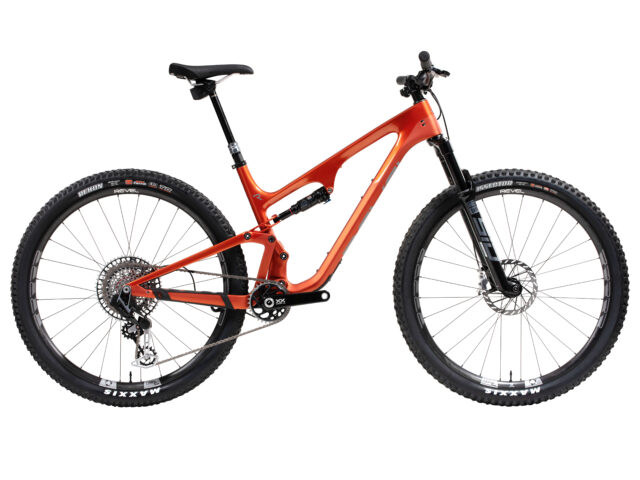
Intro
Revel’s shortest-travel, most XC-oriented full-suspension bike, the Ranger, has been in their lineup for a few years now, and today it’s getting updated to a new V2 version — but the changes from the prior generation are comparatively modest. So what has Revel changed, and where does that leave the Ranger in the modern bike landscape? Let’s take a look.
The Frame
Similarly to the Ibis Ripmo V2S that we just reviewed, Revel has given the Ranger a new rear triangle with a SRAM UDH derailleur hanger (for compatibility with the new SRAM Transmission) and in doing so has beefed up the rear end, and supposedly refined some of the pivot hardware and construction. But the front triangle carries over unchanged, and with it, the geometry stays the same as well.
The Ranger is offered in carbon fiber only, and it’s still a 115mm-travel bike (paired with a 120mm-travel fork), based around Canfield Balance Formula (CBF) suspension, like the rest of the Revel line. It’s a dedicated 29er, as one would expect for the category in 2023, and Revel refers to the Ranger as a Cross Country bike, rather than a short-travel Trail one or anything like that — they’re making it clear that they view the Ranger as an efficient, uphill-oriented bike first and foremost, but one that’s just a touch burlier and more composed on rougher descents than true XC race bikes.
Put differently, the Ranger is aimed at folks who want a bike for quickly covering big miles in rolling, varied terrain, and to that end, it’s got a lot of room to carry stuff on the frame. Sizes Medium and up have three water bottle / accessory mounts, with two on top of the downtube and one below; the Small frame has to lose one of the two above the top tube due to space constraints. The bottom bracket is still threaded, the cable routing is internal, and the brake mount takes a 160 mm rotor directly.

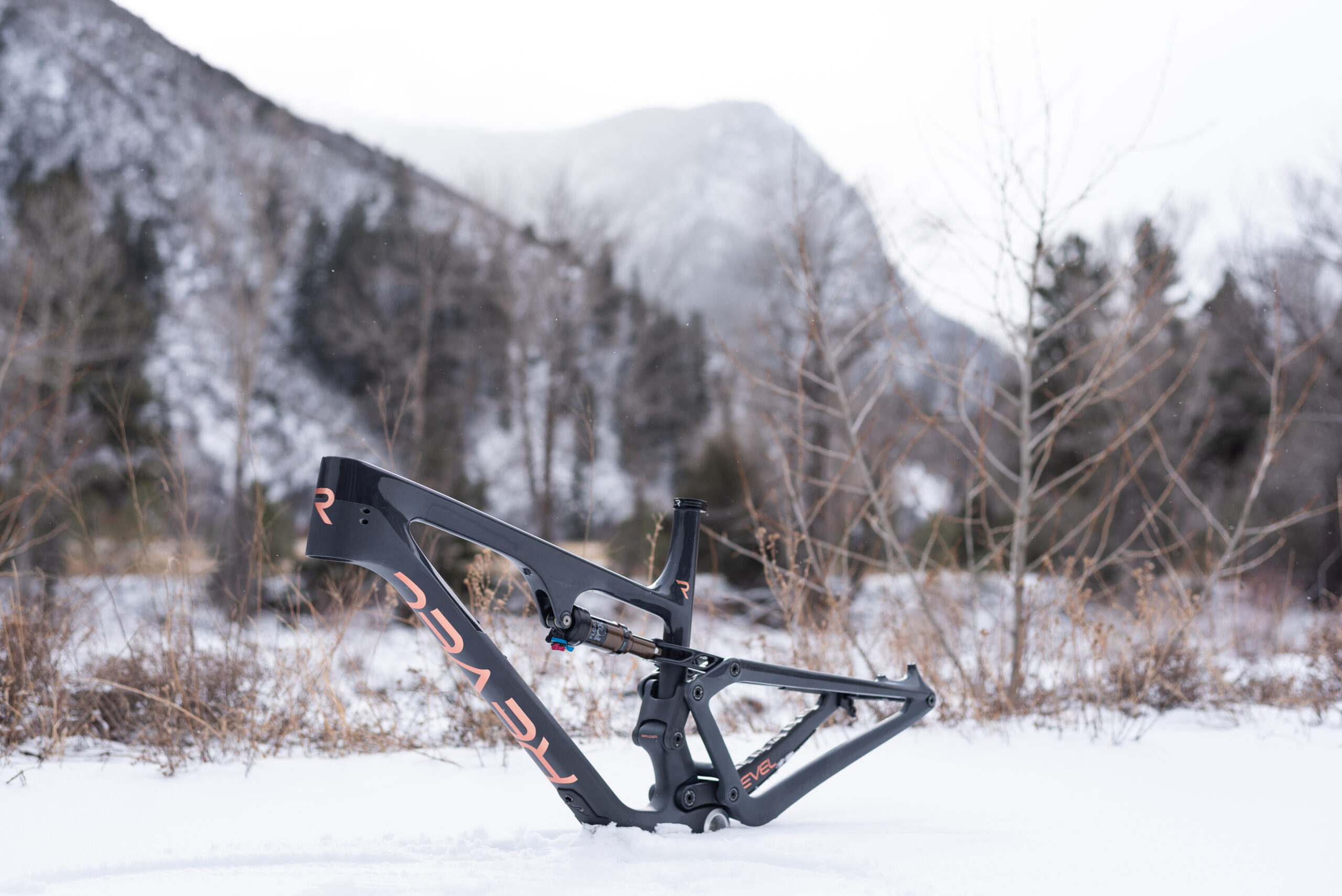


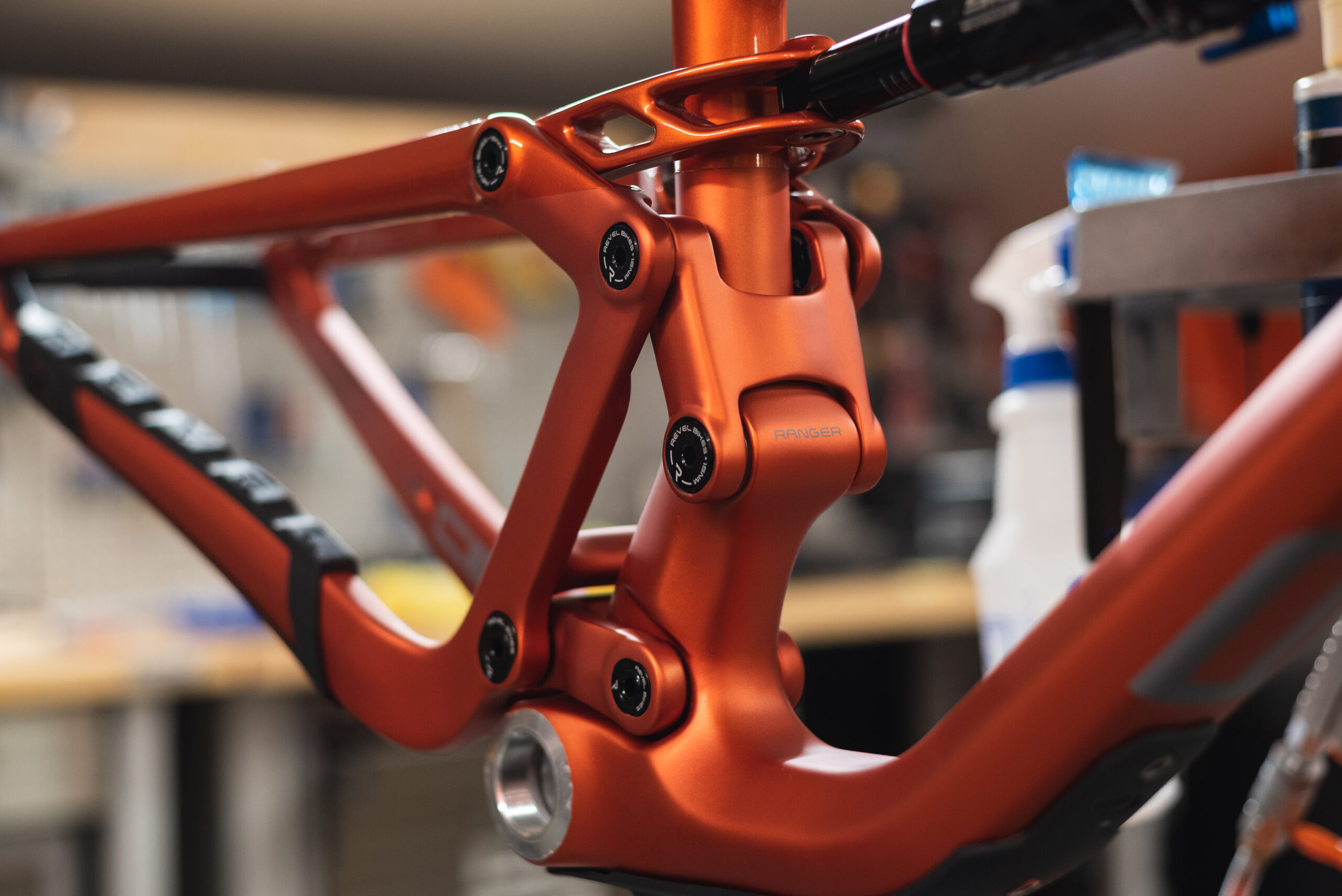
What has changed is the rear triangle. Revel says they’ve beefed it up to be 20% stiffer than the old version by way of a revised carbon layup — allegedly without any added weight over the prior version. And along the way they’ve added a SRAM UDH derailleur hanger, revised links and pivot hardware with bigger bearings in key areas (and that only take a single tool across the whole frame), a new chainstay protector (shared with the Rail 29), and a few other minor refinements. Revel doesn’t mention any suspension kinematics tweaks, and it seems fair to think of the updates as primarily being durability and ease-of-maintenance oriented, plus the addition of the UDH for T-Type derailleur compatibility.
Fit & Geometry
The Ranger’s front triangle carries over from the prior iteration that we reviewed a couple of years ago, and as such, the geometry remains unchanged as well. It’s offered in four sizes from Small through XL, all of which get a 67.5° headtube angle, 75.3° effective seat tube angle, 436 mm chainstays, and 38 mm of bottom bracket drop. Reach ranges from 430 mm through 498 mm with the Large coming in at 473 mm. The not-super-steep seat tube means that the effective top tubes (639 mm on the Large) are comparatively roomy relative to the reach figures but we’re definitely of the opinion that dialing those back a bit for more XC-oriented bikes makes sense in general, and despite the front triangle being 3 years old now, the Ranger still looks pretty up-to-date for its class.
The Builds
Revel has given the new Ranger a UDH derailleur hanger (and consequently, compatibility with the new SRAM Transmission) and they’re going all in on the T-Type groupsets — the Ranger is now available in two complete builds, with the X0 and XX versions of the Transmission. Both get a RockShox SID Ultimate fork, SIDLuxe Ultimate shock, Maxxis Dissector front / Rekon rear tires, and SRAM’s new Level 4-piston brakes.
That seems like a sensible set of builds for a bike that’s meant to be a touch more aggressive and descending-oriented than a true XC-race bike, with 4-piston brakes, a tire package that is still fast rolling but a little grippier than stuff that’s just supposed to roll well, and so on.
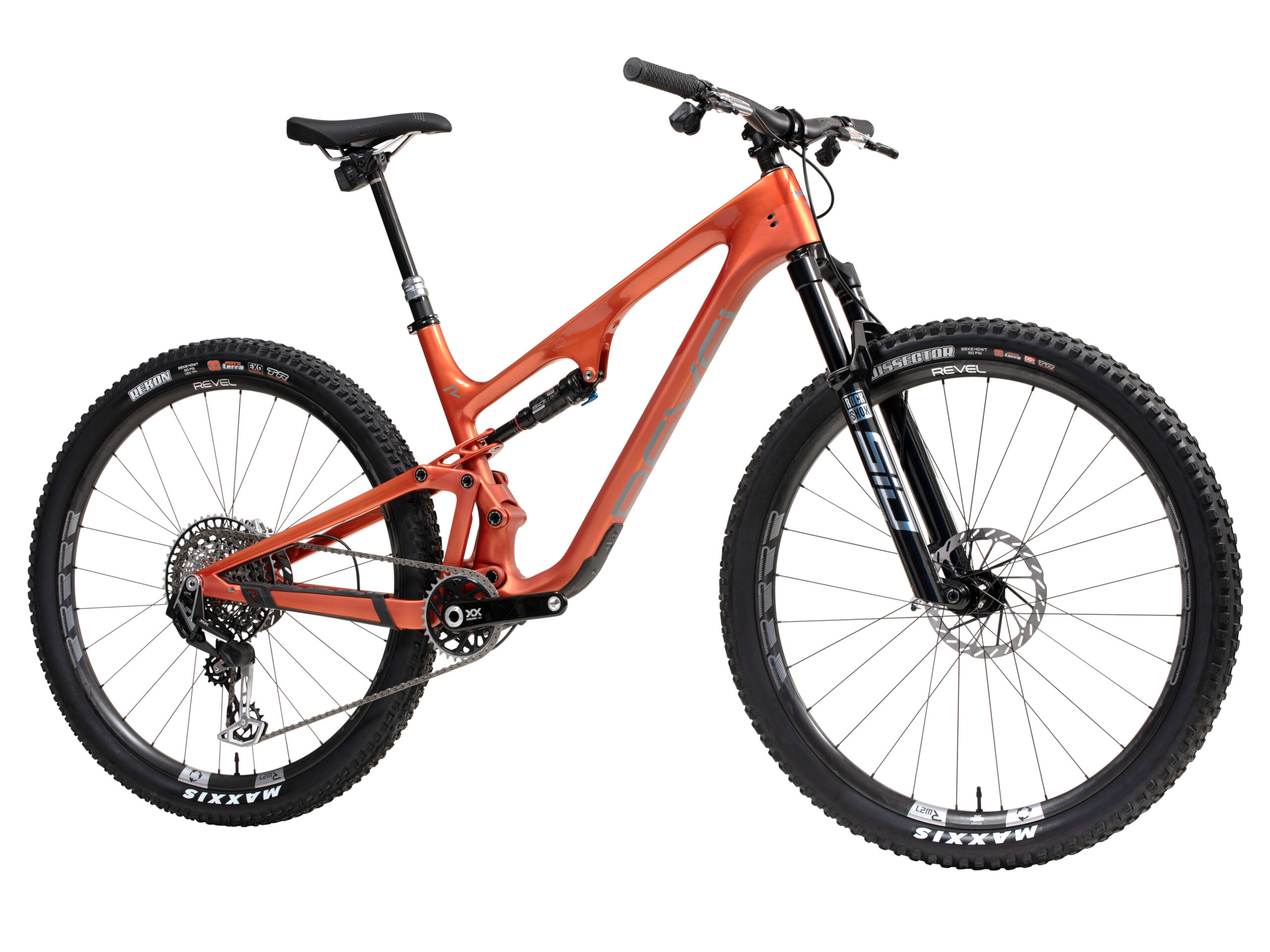
- Drivetrain: SRAM X0 T-Type
- Brakes: Shimano SRAM Level Silver w/ 180 mm front / 160 mm rear HS2 rotors
- Fork: RockShox SID Ultimate
- Shock: RockShox SIDLuxe Ultimate
- Wheels: Industry Nine Trail S rims w/ Industry Nine 1/1 hubs
- Dropper Post: Crank Brothers Highline 7 (S: 125 mm; M: 150 mm; L: 170 mm; XL: 200 mm)
- Drivetrain: SRAM XX T-Type
- Brakes: Shimano SRAM Level Ultimate 4-piston w/ 180 mm front / 160 mm rear HS2 rotors
- Fork: RockShox SID Ultimate
- Shock: RockShox SIDLuxe Ultimate
- Wheels: Revel RW27 rims w/ Industry Nine Hydra hubs
- Dropper Post: Crank Brothers Highline 7 (S: 125 mm; M: 150 mm; L: 170 mm; XL: 200 mm)
Even the least-expensive X0 version of the SRAM T-Type ecosystem isn’t cheap, and the builds on the new Ranger are both correspondingly nice and priced accordingly. Revel does have V1 Rangers available with some less expensive builds, at least for the time being. Check out their website for the latest.
Some Questions / Things We’re Curious About
(1) The Revel Ranger looks like a bike that’s meant to be light, efficient, and uphill-oriented first and foremost, but to maintain a little more composure on the way back down than true XC race bikes. So will that balance actually hold true on the trail?
(2) And how does the Ranger stack up against a bunch of the other bikes that we’d say similar things about, such as the Transition Spur, Canyon Lux Trail, and so on?
FULL REVIEW
Dylan Wood (5’10.5”, 155 lbs / 179 cm, 70 kg): I’ve spent the last couple of months logging plenty of miles on Revel’s updated Ranger. And after riding it on a variety of trails and even racing aboard it, I’ve come away with some interesting takeaways.

Fit & Sizing
The Ranger is available in 4 sizes: Small, Medium, Large, & Extra Large. At 5’10.5” (179 cm), I am almost squarely in the middle of Revel’s recommended sizing for the size Large Ranger that we tested. This definitely felt right to me; I immediately felt comfortable and at home on the Large Ranger.
With a reach of 473 mm for that size, the Ranger definitely fits like a modern mountain bike. There are many bikes with much more travel and more downhill-oriented geometry that share similar reach numbers, but the Ranger fits more like an XC bike in that the bars feel lower and the seat tube angle isn’t as steep (which I found to be a good thing, more on this later).
When seated, the Ranger caters best to a more bent-over and aggressive position when compared to longer-travel bikes with shorter effective top tube lengths and higher stack heights. I still found it comfortable, but I also felt like I was sitting very upright when I got back onto my 165mm-travel Santa Cruz Megatower. The Ranger doesn’t feel as aggressive in terms of its seated body positioning as the XC bikes I’ve spent time on in the past, but it does place my chest lower than any other Trail bike I’ve been on in the last few years.
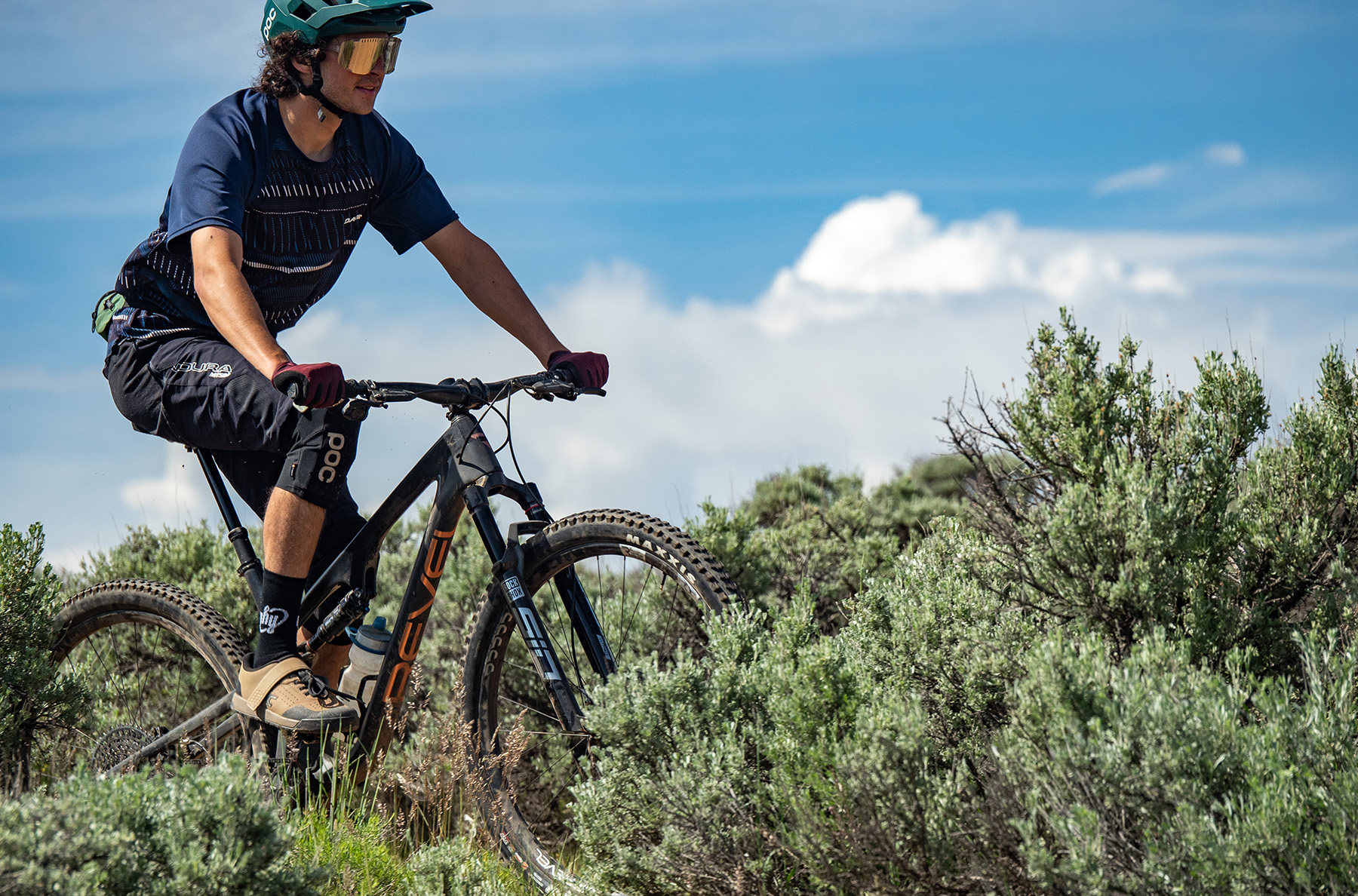
Climbing
It was clear after the first few pedal strokes on this bike that the Ranger was built for efficiency. Cranking down on the pedals immediately results in forward movement from the bike, with very little energy lost to the rear shock. The Ranger is a bike that rewards hard efforts in the saddle with quick acceleration. Additionally, it maintains good traction for tackling technical uphill sections of trail without the rear wheel spinning out too much. It falls short of most longer-travel Trail bikes in this regard, but also blows those bikes out of the water in terms of efficiency and the ability to quickly accelerate.
The Ranger’s low weight certainly helps, too; our test bike — size Large, SRAM X01 Transmission build w/ Revel R30 wheels — weighed in at 27.0 lbs / 12.25 kg. The Ranger doesn’t have much extra mass holding it back, and it always felt light and sprightly underneath me. The relatively light and fast-rolling Maxxis Rekon rear tire also helps in this department, though there is certainly room to go even faster-rolling if you’re so inclined.

While climbing rougher and more technical trails with the rear shock open, the Ranger provides excellent efficiency while also maintaining enough traction for me to clean tricky sections. Locking out the RockShox SIDluxe Ultimate stiffens up this bike significantly, providing an even more efficient platform. I opted to lock out the rear shock of this bike on smooth roads and singletrack, and I really enjoyed the gains in rigidity, resulting in even more direct pedal-to-wheel energy transmission. Using the lockout definitely sacrifices some traction and can feel harsh and hardtail-like on rougher trails, but I think Revel and RockShox really nailed the stated 430 lbs of lockout force here.
The Ranger’s 75.3º effective seat tube angle also strikes a nice balance for ascending trails and roads with varying degrees of slope angle. The seat tube angle feels steep enough to keep the front of the bike weighted on steep climbs, which is definitely aided by its lower stack height. But when cruising along flatter roads and trails, the cranks are in a good spot to still be able to put a lot of power down, and I never felt like I was sliding off the front of the saddle as I sometimes do on flatter terrain aboard bikes with seat tube angles closer to ~78º.
Descending
With the Ranger, Revel intended to make a bike that is sprightly and efficient on the uphills, but still capable and fun on most descents. So how did they do? Quite well, it turns out.
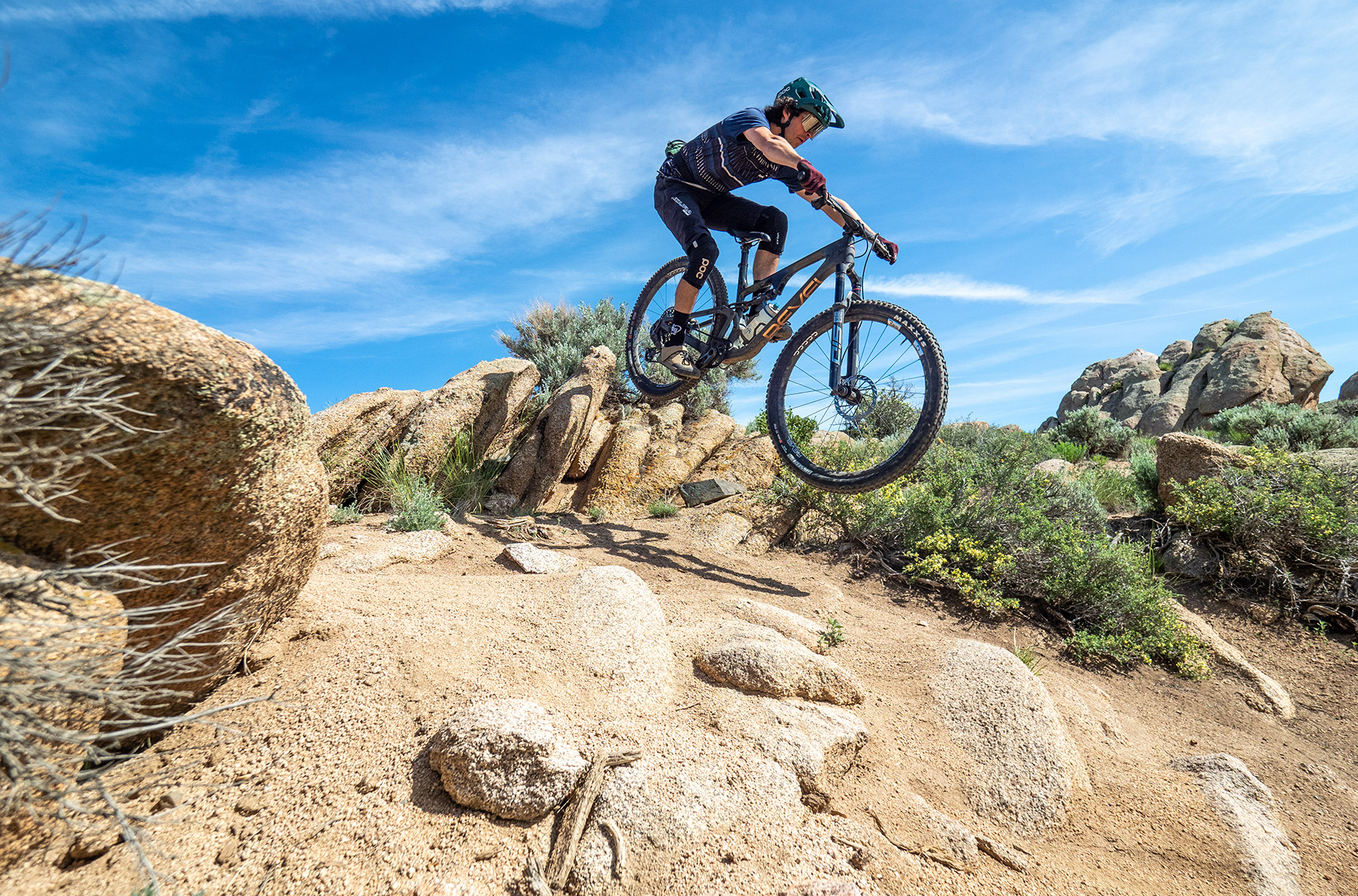
When pointed downhill, the Ranger feels impressively stable and capable when taking into account how well it goes uphill. Suspension-wise, this feels like a short-travel bike, and it doesn’t trick you into thinking you have more than 120 mm of travel up front and 115 mm in the rear. But this travel is well-utilized; when it comes to descending, I’d say the Ranger feels like an aggressive XC bike.
We’ve praised the Canfield Balance Formula suspension layout on several bikes in the past, all of which featured more rear-wheel travel than the Ranger, and while less obvious in this shorter-travel implementation, it is still quite impressive. Most notably, the Ranger maintains strong rear-wheel traction under braking, which many of the more race-oriented full-suspension XC bikes struggle with. In this regard, the Ranger still doesn’t match most Trail bikes with more travel, but the Ranger is very impressive for its class. I also wound up running a varying amount of sag on this bike during the setup period, and the Ranger’s suspension felt quite good at a variety of sag points — more on that below.

This definitely isn’t a bike that can (or should) just plow over everything; rather, it benefits from good line choice and targeted weighting and unweighting of the wheels. Over rough terrain, it pairs best with an active and precise riding style. That said, its modern reach numbers definitely add some stability, relative to XC bikes of old; the Ranger has a big sweet spot and isn’t very sensitive to minute changes in weight distribution.
It did take me a couple of descents to get used to this bike’s 67.5º head tube angle, which equates to a quicker steering feel than anything else I’ve been on in the past five years or so. But that unfamiliar feeling disappeared pretty quickly and wasn’t a persistent problem, even when switching from a much slacker bike back to the Ranger, once I’d grown accustomed to the Ranger’s steeper angles again.
On mellower, flowy descents, I really appreciated the Ranger’s tendency to carry its speed well. Pumping it over rollers produces significant forward momentum, and just like on the uphills, this bike feels quick when sprinting out of corners and attacking the flats.
Still, the Ranger has adequate geometry and just enough suspension travel to make going fast downhill enjoyable. I used the Ranger for The Growler, a ~32-mile XC-esque race, where I found that this bike really allowed me to rest and recover on descents and entrust the bike to remain composed, allowing me to save my energy for the next climb.
The Build
We tested the SRAM X0 Eagle Transmission build of the Ranger, plus Revel’s RW30 carbon wheel upgrade. Overall, I think this is a really cohesive build kit that matches this bike’s character, with some room to take this aggressive XC bike in either direction (i.e., more uphill- or more downhill-oriented).
SRAM’s new Transmission was a clear highlight for me, and I’ll be talking more about Transmission in particular in our upcoming full review of that system. But, in short, SRAM’s new Eagle Transmission offered very precise shifting and incredible downshifting under load. Dumping three or four gears at once when encountering a punchy uphill was a non-issue on this bike, and it really gave me the freedom to shift whenever and wherever I needed. SRAM’s new cassette also offers great spacing between the gears on the low end (i.e., easiest part) of the cassette, allowing me to find a good rhythm and maintain it by shifting accordingly. The pod shifter took some getting used to, but I am happy with it nonetheless.
I was initially worried about the SRAM Level Stealth brakes on the Ranger, since I’ve had Level brakes in the past that were pretty weak and sketchy. But I ended up really getting along with the level of power and modulation these brakes offered, allowing me to maintain traction and effectively slow down on even the steepest rock gardens and slabs at Hartman Rocks here in Gunnison. I’m not inspired to throw these brakes on any Enduro bikes, but they were plenty powerful for the Ranger.
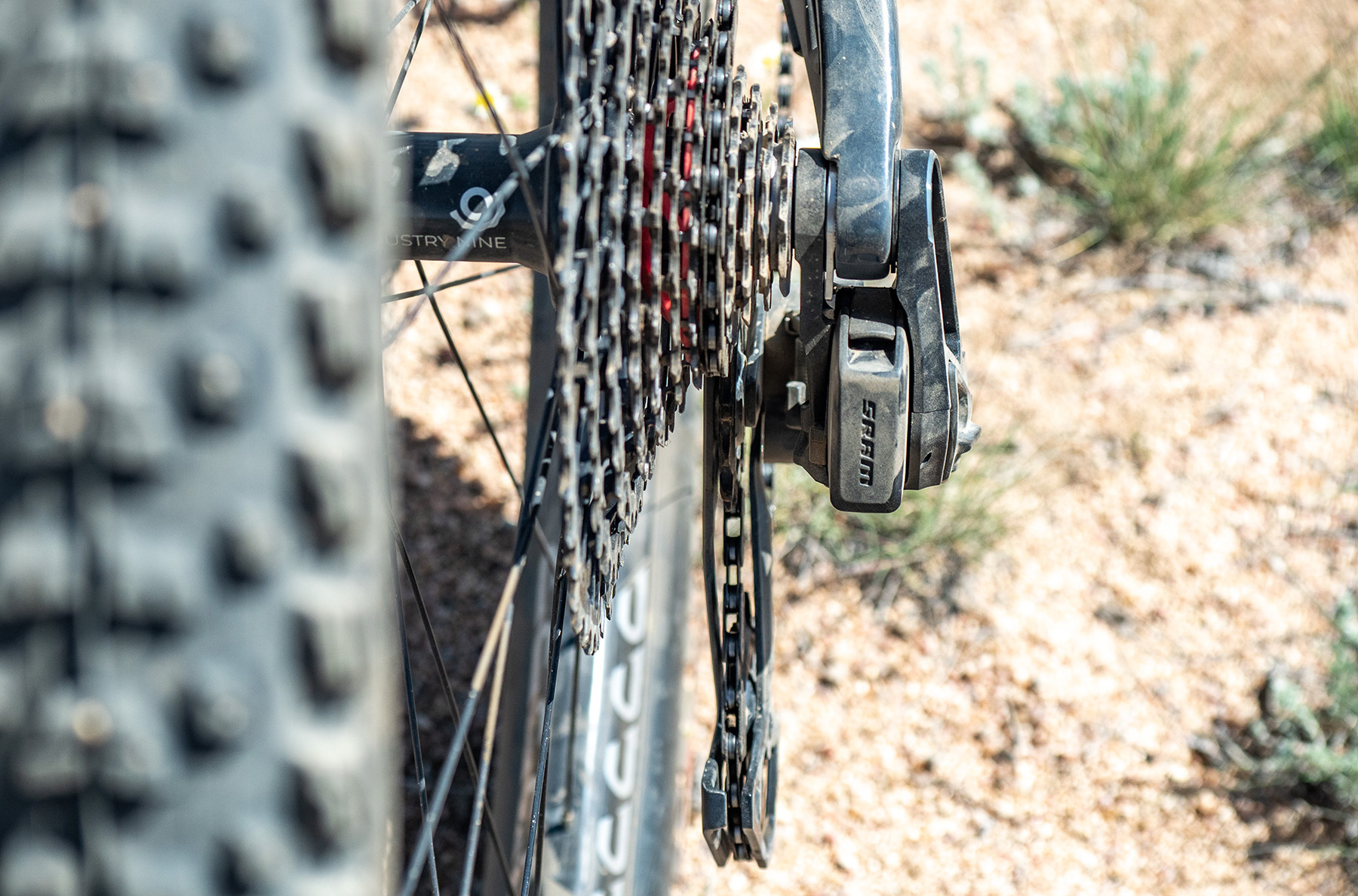
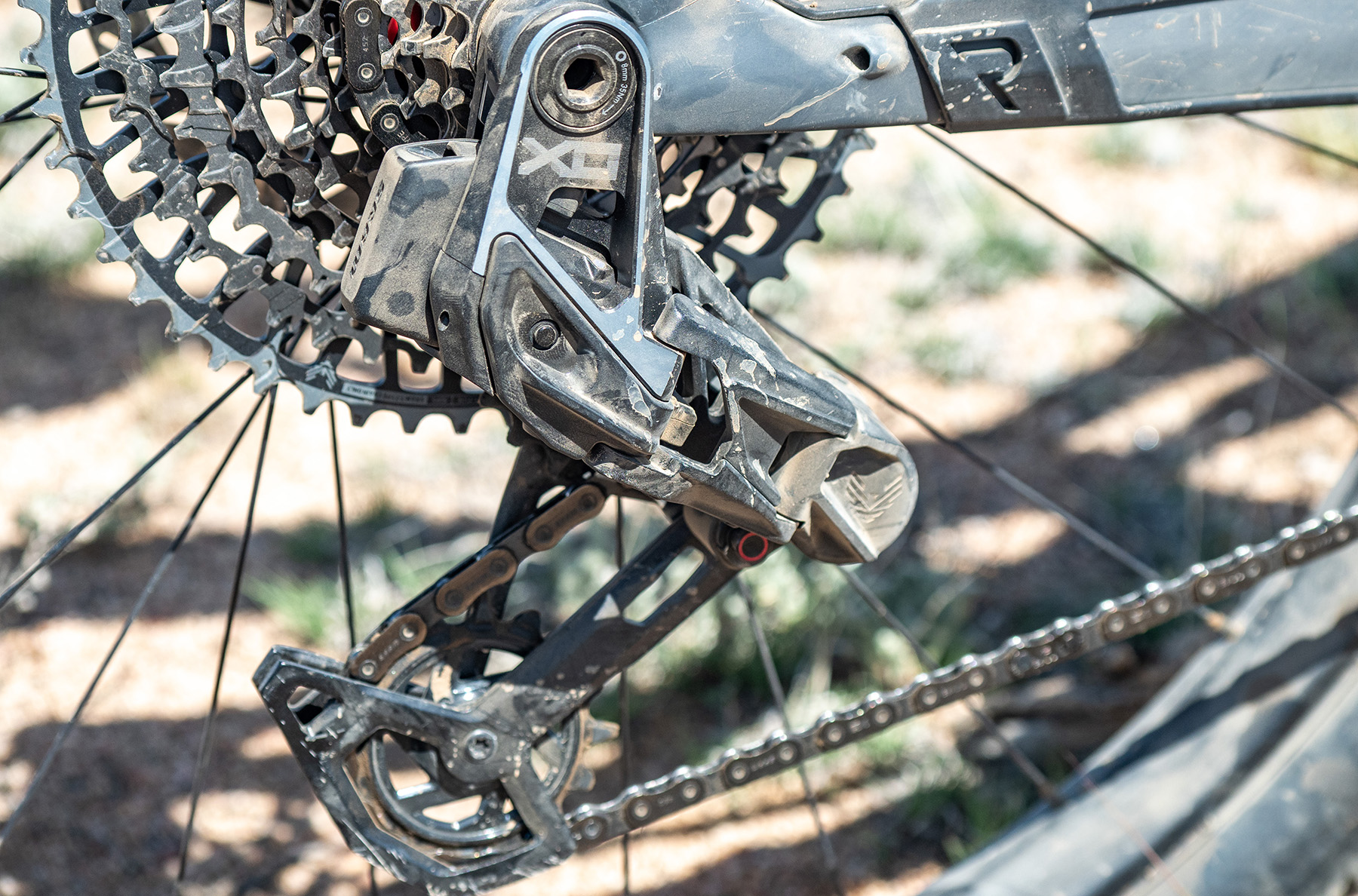
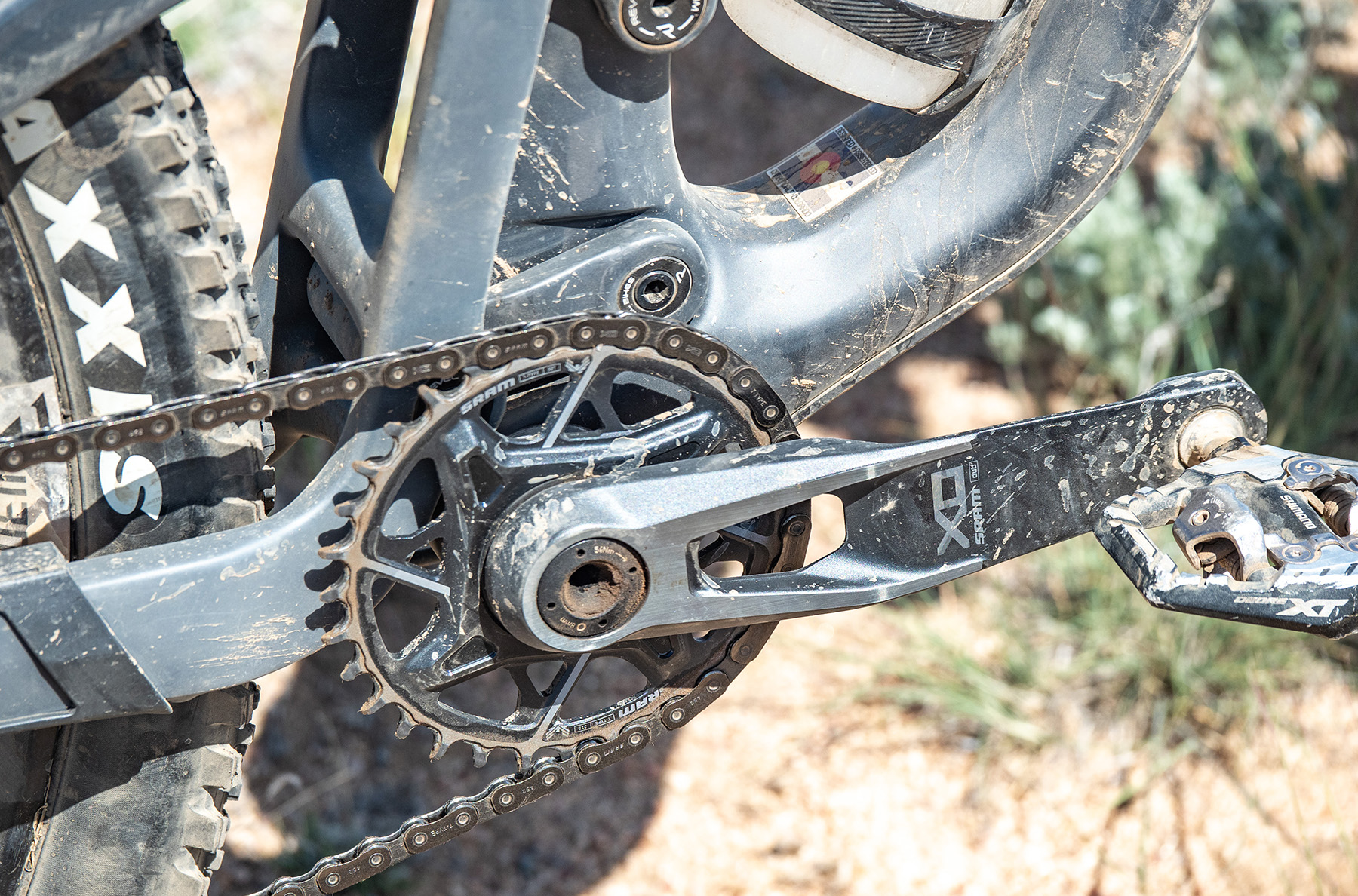

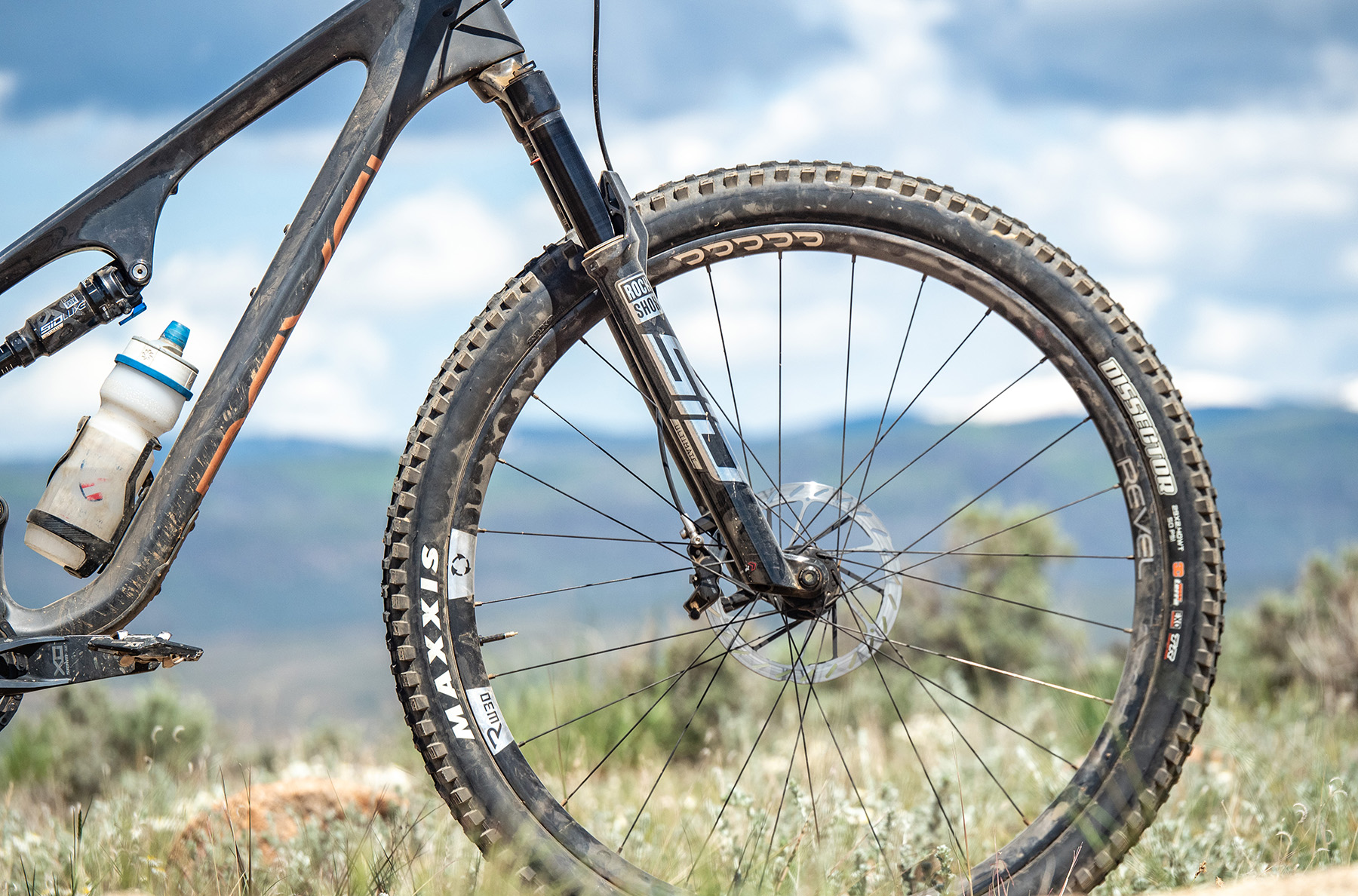
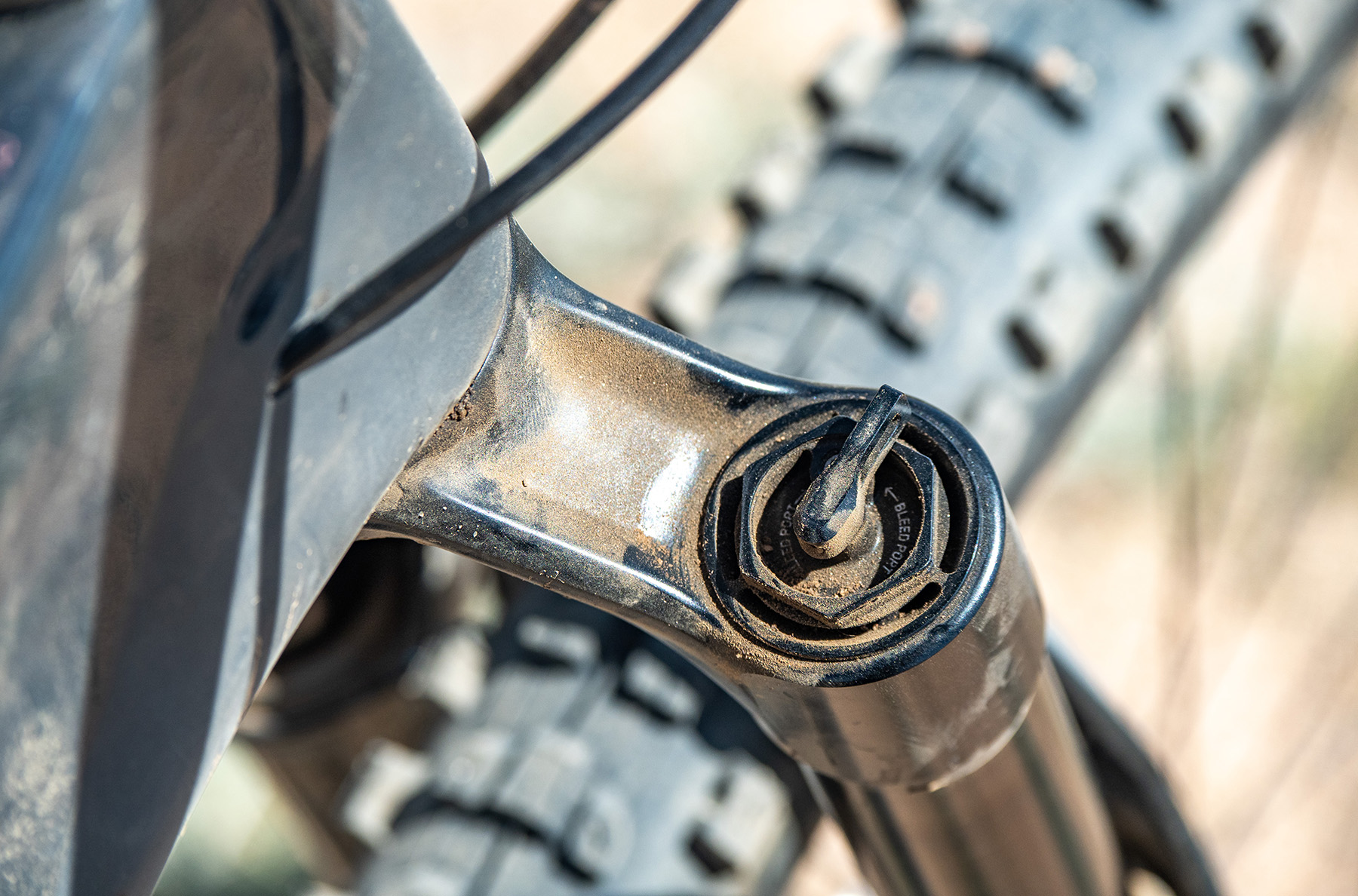
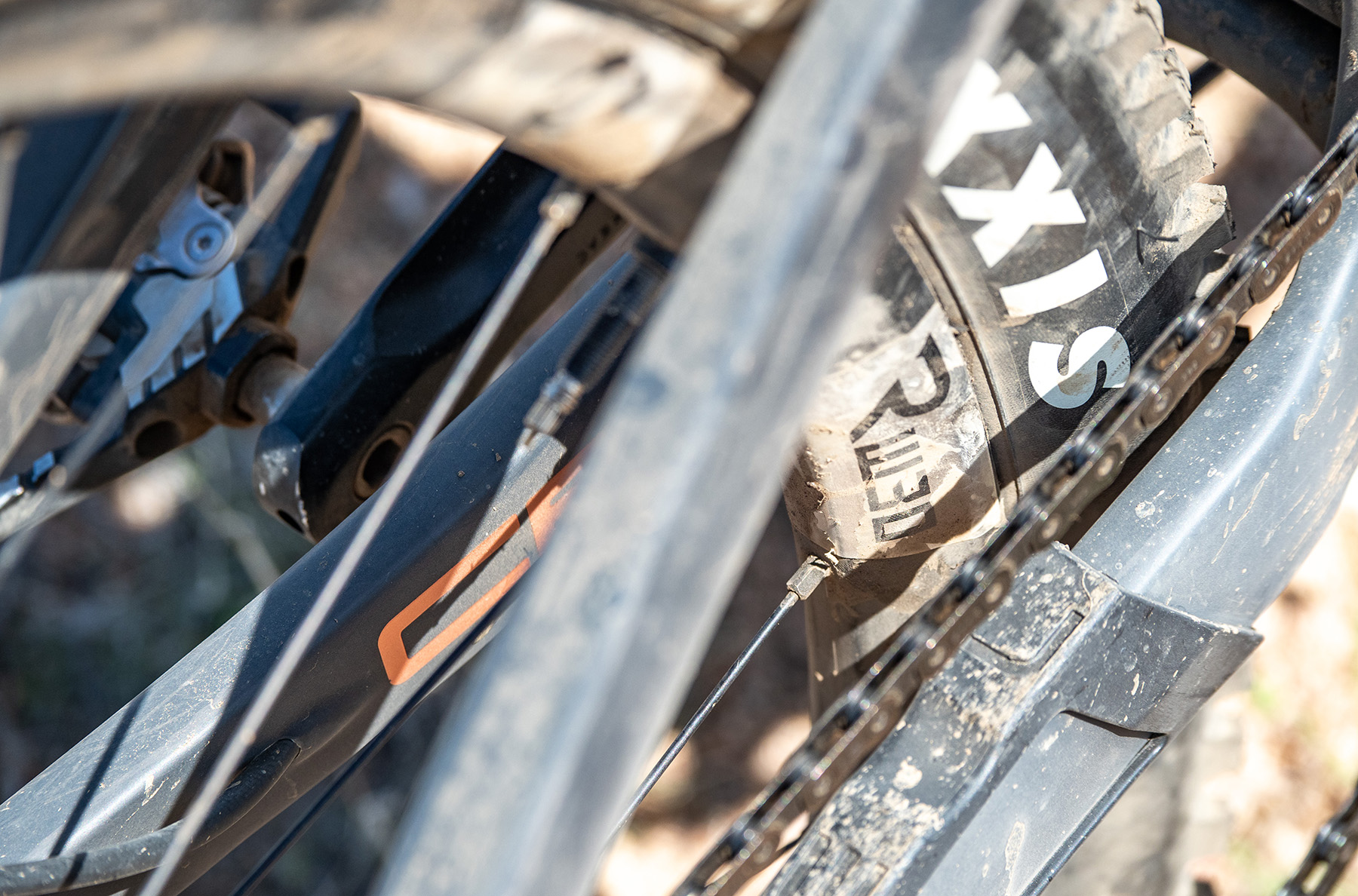

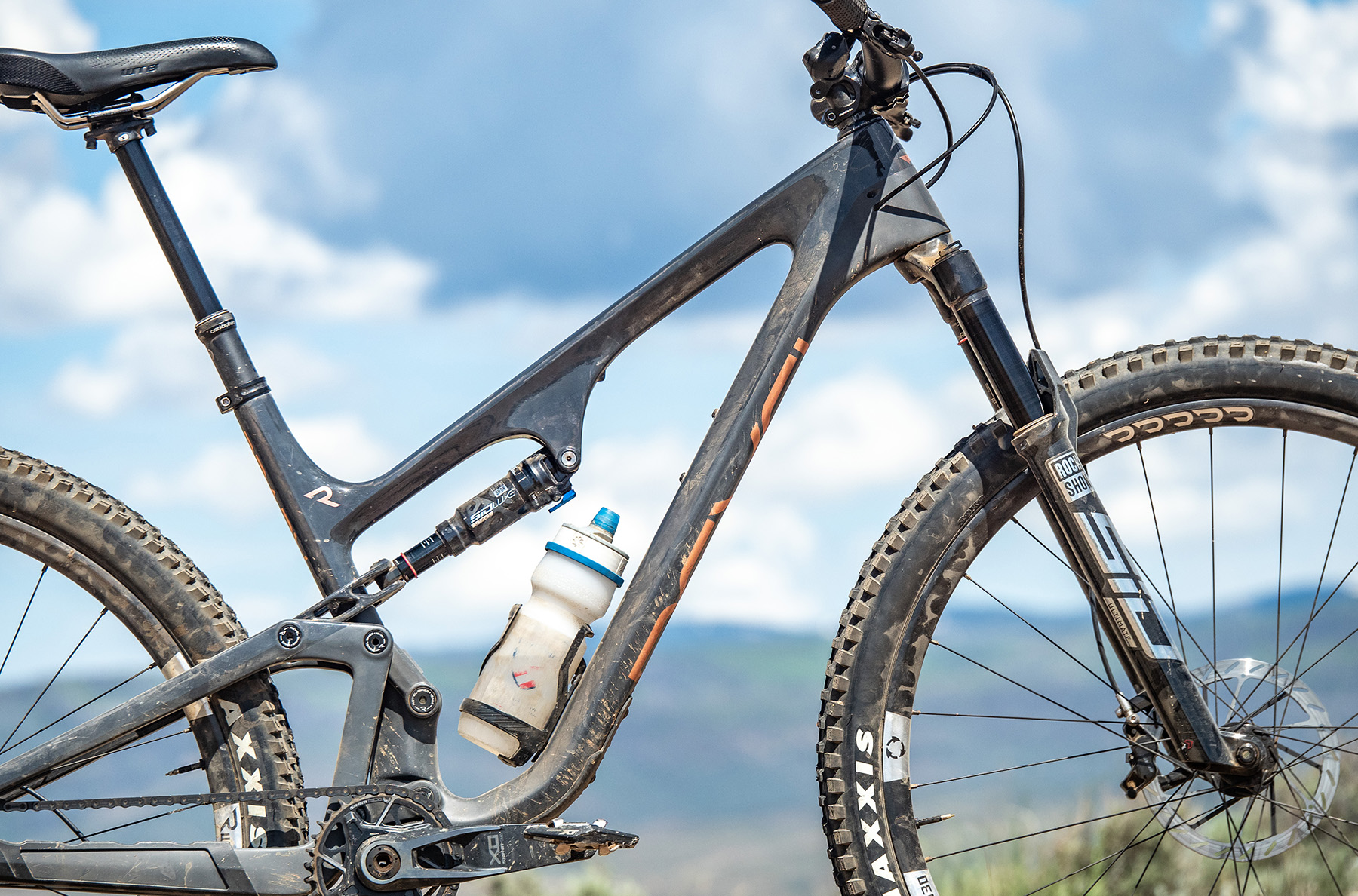
The 120mm-travel RockShox SID Ultimate fork, although far from the stiffest option out there, was also fine on the Ranger and I didn’t find myself asking for more. It has a really aggressive lockout tune that came in handy on roads, but I didn’t touch it on singletrack. I ended up running 75 psi in the fork with the rebound damping 7 clicks from fully closed.
The RockShox SIDLuxe Ultimate shock also paired well with the Ranger, providing a more energetic and lively ride than a plush and planted one. It took me a little longer to get the rear shock dialed, relative to the fork, but I ended up running about 25% sag at 170 psi and 6 clicks of rebound from fully closed.
It was interesting to see Revel’s RW30 wheels on this bike, given that I spent last fall on their much more downhill-oriented Enduro bike, the Rail 29, with the same wheelset. Putting these wheels on the Ranger helped make up for its more XC-oriented suspension in rough terrain, definitely outperforming the lighter, narrower XC wheelsets I’ve been on, with the RW30 wheels being superior in terms of their precision and ride quality. That said, folks interested in saving ~100 grams might be better off on Revel’s narrower RW27 wheels.
The tires on the Ranger also seemed a bit more downhill-oriented than the rest of the spec, with a Maxxis Dissector up front and Maxxis Rekon out back, both being 2.4 inches wide and the “wide tread” models. They provided plenty of traction at the expense of some rolling efficiency and were a good match for loose, rocky, and rough trails. However, I also spent a lot of time on the Ranger with the Rekon bumped to the front and a 2.3” Specialized Ground Control out back, and this definitely made the Ranger more efficient and race-oriented. I opted to race the 32-mile Gunnison Growler with this tire configuration, and I am glad I did — it offered the fast-rolling ride I was after without sacrificing too much grip in corners and when braking.
Comparisons
Here’s how the Ranger compares to several other bikes in its class. If you’re curious about other models, aren’t sure where to start in the first place, or have any other gear questions, you can Become a Blister Member, send us a message via the Member Clubhouse, and our reviewers will help you out one-on-one.
The Trail 429 is notably more capable on the downhill while the Ranger offers a more efficient and XC-oriented ride. The Trail 429 stays more composed in rough sections of trail, while the Ranger requires more attention to ride at the same speed and doesn’t feel as smooth. The Ranger is quicker to accelerate and it feels like more of your effort goes right into your rear wheel, but both bikes are relatively stiff and sporty overall.
This is a similar story to the Trail 429 comparison, though the Jet 9 feels even more plush and Trail-bike-like than the Trail 429. The Jet 9 feels smoother with better traction all around, while the Ranger is more sprightly and eager to attack the climbs. The more you care about a short-
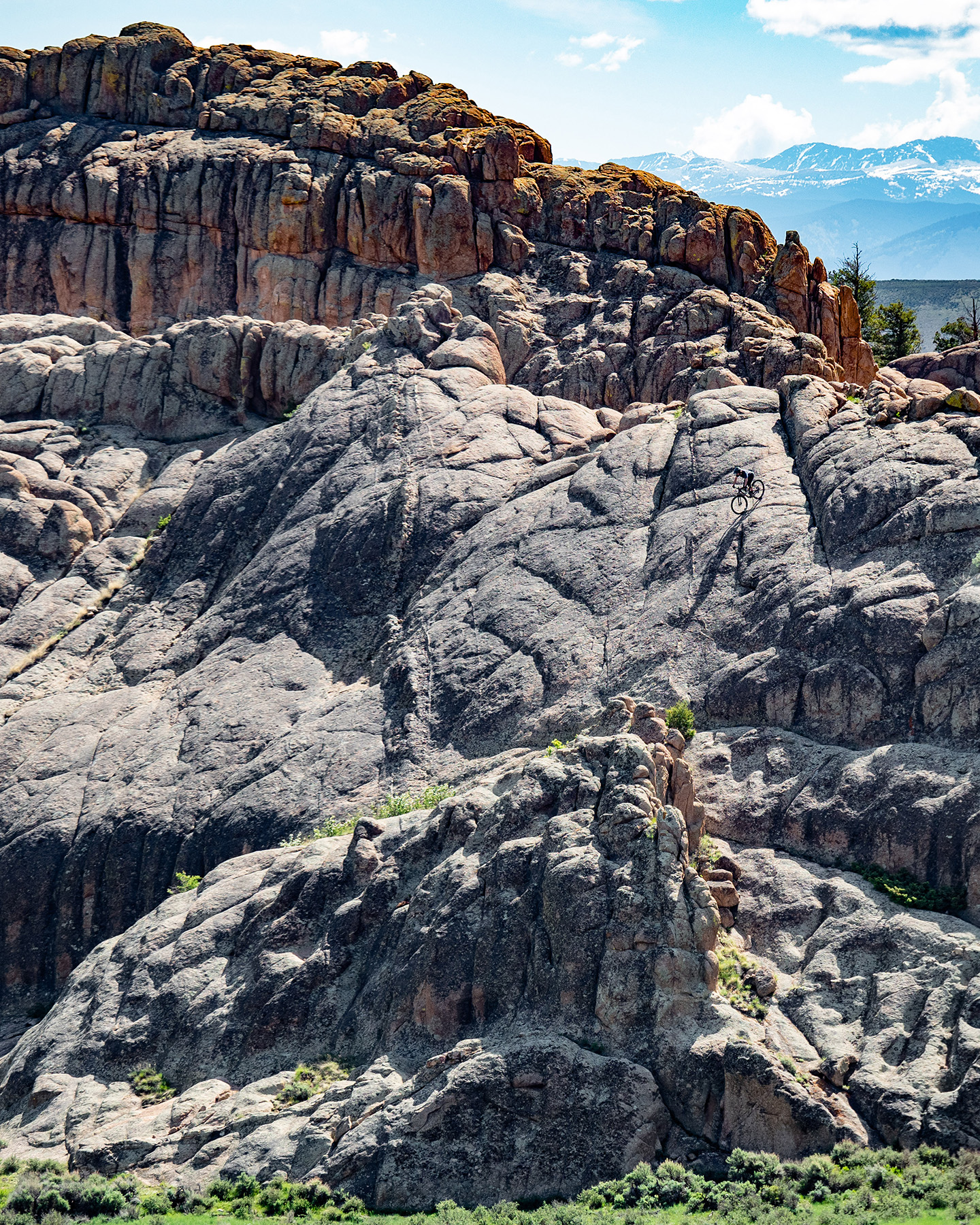
travel bike feeling forgiving and planted on the way down, the more sense it makes to go with the Jet 9, whereas the Ranger is a better choice for those who want more uphill efficiency at the cost of some downhill capability.
On a similar note to the two bikes above, the Ripley AF also feels more biased toward downhill performance than the Ranger. These two bikes also happen to be miles apart in terms of their prices, but build spec aside, the Ranger is again a more suitable XC race rig while the Ripley AF feels more comfortable going downhill fast over rough terrain. The carbon Ripley probably narrows the gap a bit, but given that its geometry and suspension design are extremely similar to the AF version, I think most of what I just said would apply to the carbon Ripley.
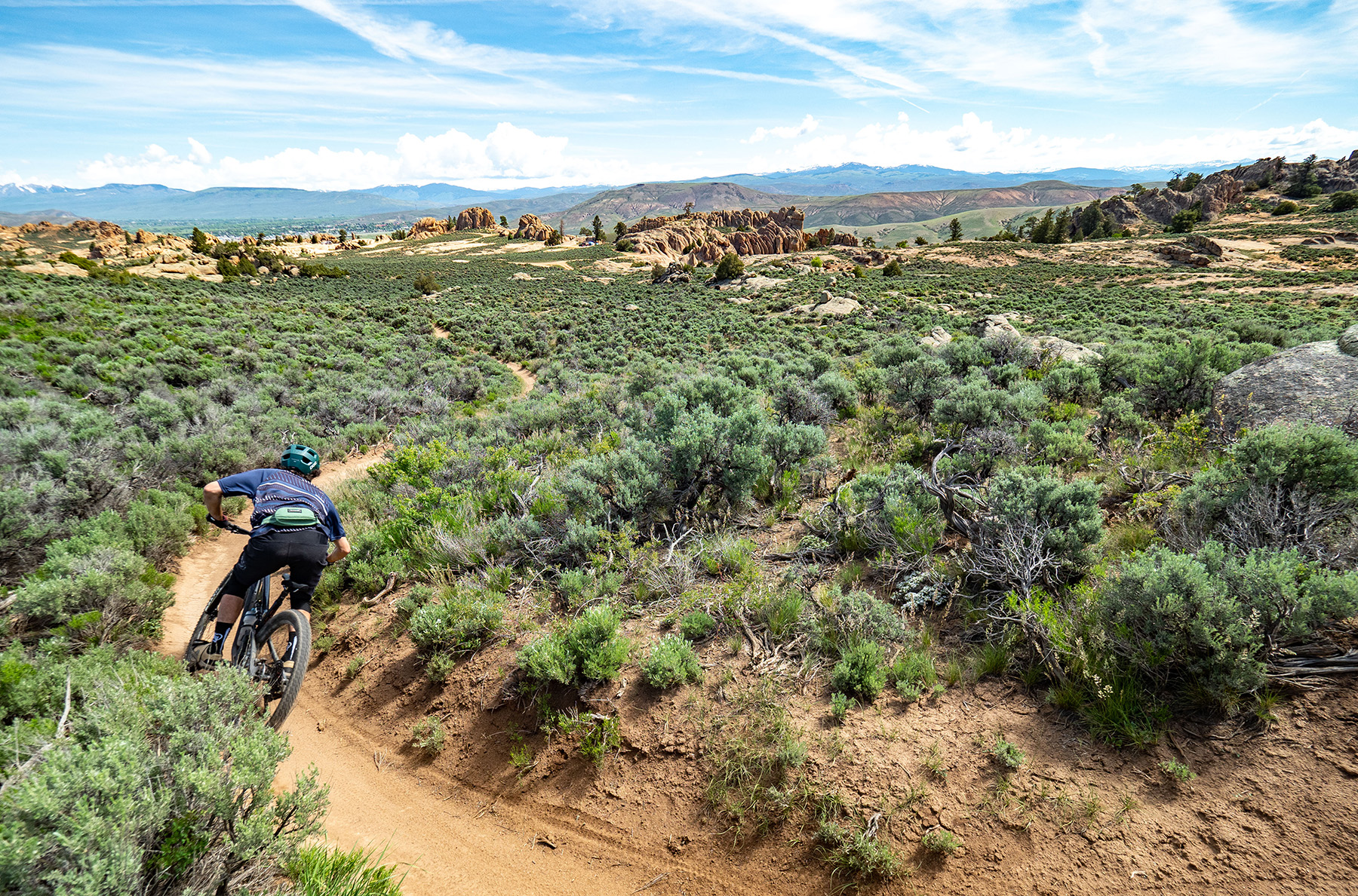
Who’s It For?
Folks who like an efficient, stiff XC bike but who also want more downhill capability than a traditional full-suspension race rig.
The Ranger leaves little to be desired on the way up, with exceptional pedaling performance whether the shock is opened up or locked out. But given that, it also offers enough stability and bump-absorbing capability to allow you to attack many descents, or simply rest and let the bike do most of the work.
Bottom Line
Blurring the line between short-travel Trail bikes and World Cup XC race rigs, the Revel Ranger offers a mixture of overall efficiency and downhill stability that allows it to feel at home on both XC race courses and rugged singletrack. Of course, it makes sacrifices in both directions. But for those who like to cover a lot of ground and attack the climbs, then slam that seat down and let loose on the downhill, it’ll be really hard to make the Ranger feel like it’s wildly out of place.
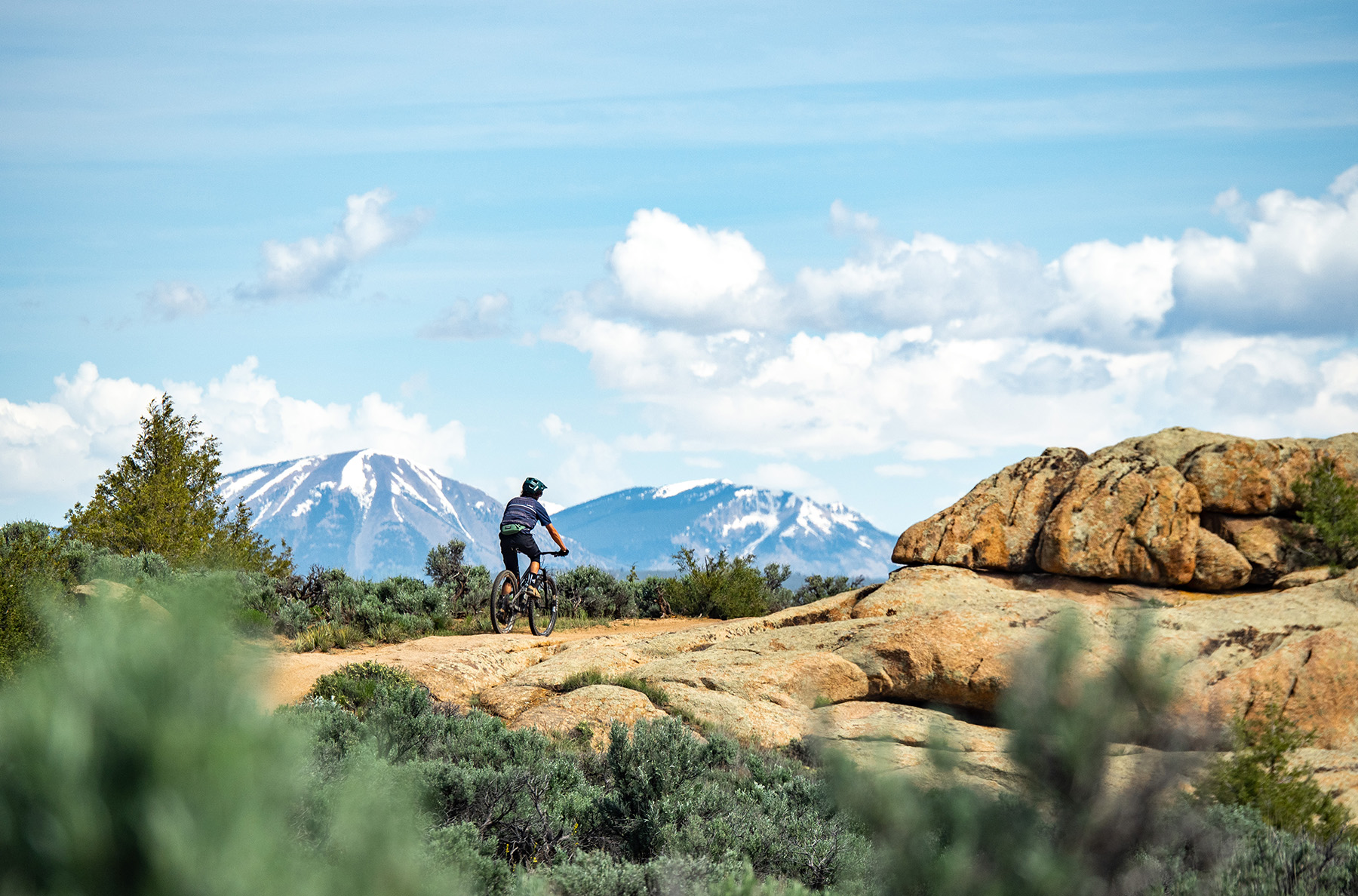

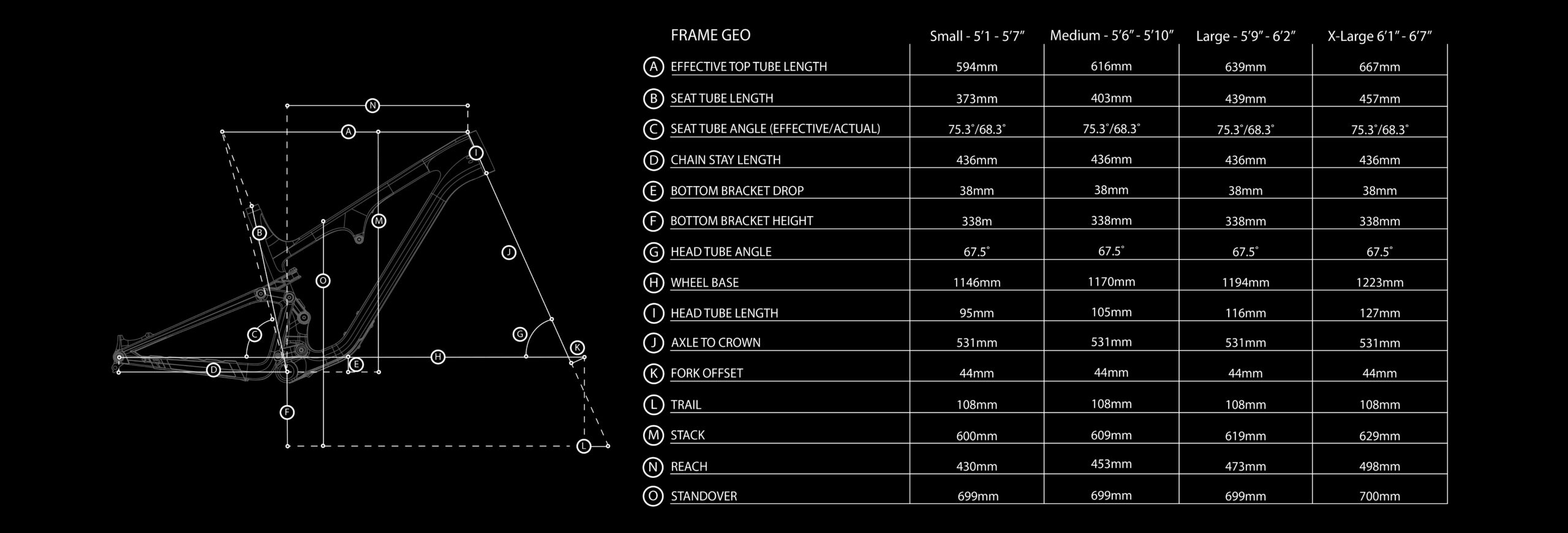
Wow that third to last pic is legit
Great review. This bike would really suit me in the short travel notch in my quiver: light, stiff, efficient, yada yada.
But that is borderline insane pricing for a DTC bike in what is clearly becoming a softening market.
Also sounds like it would benefit greatly from a Fox 3-position shock. Made a fantastic improvement to my Top Fuel.
IMO.
Revel also has an extensive dealer network in the US and internationally, so it’s hard to draw a direct comparison to D2C only brands.
Thanks, I did not realize that, thinking they were DTC only.
Nevertheless, a Top Fuel GX AXS can be had for $6,500. No Transmission, but still.
are there cable guide holders on the bottom of the frame?